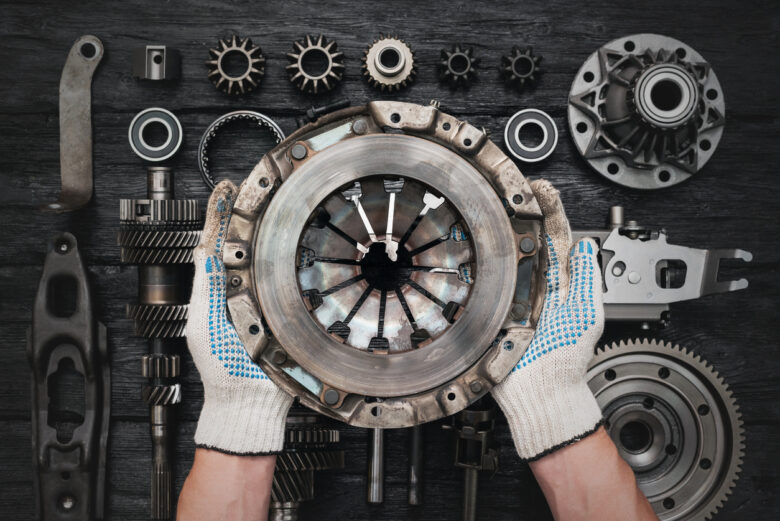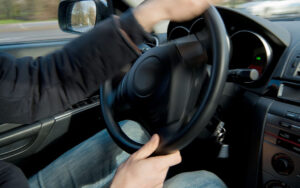Do you feel that your car has lost some of its peppiness? Are those once seamless movements of the gear changes now followed by an annoying slip? If yes, then you might be faced with a problem of a slipping clutch. This is one of the common predicaments that can make one feel stranded on how they can manage to get back on the road effectively. But don’t worry; you’re not fighting this strife of automobile problems for yourself.
The first step on how to take back the reins and control your vehicle as you see fit is to have some knowledge about what goes on under the hood. You don’t have to be a hard-core car repairer; rather, redressing a slipping clutch can make you empowered as a driver. Let’s get to the bottom of everything that concerns diagnosing and fixing this problem!
Understanding the Clutch System:
The clutch system is one of the critical elements that are found in the transmission of any automobile. It smoothed out the transition between the engine and the wheels when a gear is selected. At the most basic level, the clutch comprises a number of components, which include the pressure plate, clutch disc, flywheel, and the release bearing. Clutches work by bringing into contact those parts. When the clutch pedal is pushed, these parts are disengaged from one another. This disconnection enables you to change gears without stopping the engine or damaging it.
The knowledge of how this particular system operates will also help you figure out when something else is broken. A good clutch will allow for smooth and quick gear changes when driving. On the other side, however, problems such as slipping can cause slow pickup and additional stress on other parts of the driveline. Taking time to learn how the clutch system works does not only improve the rest of your life but also makes you prepared in case there are problems that will need to be solved in the future.
Symptoms of a Slipping Clutch:
Driving with a slipping clutch can be quite tiresome as it becomes increasingly harder to engage into a higher gear. The first sign notable is the increase in engine RPMs with no relative surge forward by the vehicle. This is a red flag you need to check on the car.
Shifting gears is another common sign associated with a slipping clutch. It’s as if you are croaking the gear lever and have to do it in stages or it pops out without your intention, which indicates problems with the clutch system.
There are clicks or sounds that you may experience when connecting or releasing the clutch. The feel of dragging while pressing down the pedal beyond what is necessary or the feeling of shrill sounds is also not okay since it should not be happening to anyone using the car.
And be mindful of any burning odours; there is a possibility that your clutch is slipping and overheating.
If they become commonplace for you, avoid disregarding them—it often means that there may be some greater problems in the future.
Reasons for a Slipping Clutch:
- A slipping clutch can result from a multitude of damages, most from normal wear and tear. There is no question the breakdown of the friction lining is the main culprit. Over the years, this ‘grip component’ becomes consumable in physical terms.
- Apart from the above factors, heat is a detrimental factor as well. Heat that is above a reasonable degree can crystallise or course other mechanical components such as a pressure plate or flywheel. Other factors, such as riding on the clutch or stop-and-go driving, contribute only to making matters worse.
- Another reason why this may happen is low hydraulic fluid in systems that use hydraulic clutch. When the level of the fluid is lower than necessary, the pressure of the system is not sufficient, resulting in slippage when accelerating.
- Also, the improper placement of components/parts of the clutch can lead to uneven surface contact. This further leads to uneven engagement of the clutch components, which may mean that they will fail with time.
- Finally, the presence of oil leaks into the parts that are exposed for the purpose of creating decreased-performing surfaces can also lower their scope of effectiveness.
A Lean Guide to Restoring a Clutch that Keeps Slipping:
First things first, make sure that your vehicle is parked on a flat surface. Put on the parking brakes for safety. After putting on the brakes, next, collect all the required materials, which include a jack, jack stands, and wrenches, and if available, a clutch alignment tool. Using the jack, lift the car with great caution and use the stands to support the car before going under it to the transmission. Remove any protective covers or panels blocking your way to the clutch assembly; this may entail removing screws or clips.
Once exposed, look for any worn or burnt friction plates, structural springs, and other such elements. Dispose and make new replacements of these cherubs where required. Where everything has been computerised, reverse order includes reassembling of the components, such as disconnection or redness of wires, which will not be mechanised reversal of order physics at the end. Avoid doing this in any haste. Getting it done so would minimise issues arising in the future. Once everything is done and the vehicle has been repaired, go on a test drive slowly to see if there’s normalcy in the vehicle. Based on your feedback during the test run, there may be a need for adjustments, which you feel from the performance.
How to Treat a Clutch in a Proper Way?
- If you want to keep the clutch in good condition, maintain normal driving efficiency. Avoid abrupt starts, grabs, or jerky movements of the stick shift, which increase clutch wear and the components associated with it.
- Remember to make most inspections of the hydraulic system checks level as well as the leaks for a long time. Poor performance problems can arise because of low fluid levels.
- Get worn-out machine parts replaced with a new set without delay. Leaving unaddressed such signs makes issues worse in the future.
- Strive to procure quality replacement accessories whenever circumstances permit so. Using cheaper ones may save you money now but may create more costs in the future due to continuous maintenance.
- Also, make sure to remove the engine every once in a while and make sure a qualified mechanic checks it. Tackling small problems before they aggravate can help to avoid big problems later on.
In Which Circumstances Is It Advisable to Consult a Mechanic?
When there is an opportunity to fix the slippage of the clutch but it is not possible or is not safe to do so, then ask for help. Clutches, for example, are very complicated assemblies that require experience on how to repair them. If you’ve been trying to fix your clutch but notice odd sounds or constant slipping, don’t ignore them. These symptoms can be a signal of even bigger problems that must be attended to professionally. Moreover, if you are a beginner at working with clutches, it is better to ask a mechanic, who will help you save a lot of time and costly errors.
If the undertaking seems really hard, don’t hesitate to get assistance from a professional practitioner. More often than not, it is cheaper to engage with professionals than to repair things without competent skills or equipment. Never compromise your safety or that of the car based on how well the vehicle functions. In the case that problems still exist after efforts to fix them have been done, then seeking someone who can fix it well is the only solution.
Conclusion:
To keep the clutch system in perfect working condition, it is essential to plan and perform regular maintenance. You can eliminate slippage problems if such measures are undertaken in advance. Complete knowledge of the direction and its engine and parts gives an advantage to the driver. Timely identification of problems may prevent wasting valuable time and finances in the future. If your attempts to resolve the situation have not given satisfactory results on their own, do not hesitate to seek external help. Specialists are skilled and equipped to deal with such tricky situations skilfully.
The vehicle smells and drives smoothly under every condition while retaining solid control over the driving. A good clutch not only helps improve overall efficiency but also better road safety. Learn everything about your automobile systems, utilise them correctly, and be pleased with the improved comfort in driving every single day.
FAQs:
1. What causes a clutch to slip?
A slipping clutch is usually the result of failures of various parts, incorrect settings, and lubricant on the bathtub. All these processes presuppose physical activity, and accordingly, hybrid driving pressure can turn on less wear.
2. How do I know if my clutch is slipping?
Changes in shift engagements or speed with rpm changes or speed with an ‘unstressed’ speed may sometimes be observed, and people may also complain of nasty smells like smoke.
3. Is it possible to repair a slipping clutch without professional help?
Yes, many automobile enthusiasts undertake this problem on their own, provided they have a few essential tools and basic mechanical skills. For the preparations done, it is quite useful to evaluate how comfortable one feels regarding the repairs that need to be done.
4. What is the price range for a slipping clutch replacement?
The price difference goes low, especially on the make and type of vehicle, but on an average cost of between 600 and 2000 dollars when factoring in both labour and complete parts replacement necessary.
5. What can I do to ensure that my clutch doesn’t slip again?
Using correct driving habits, especially while clutches, not abusing the clutch pedal too often, and regular checks and maintenance such as oil changes will surely help the life of the car. Another thing that helps very much in preventing such situations is fluid level monitoring.




